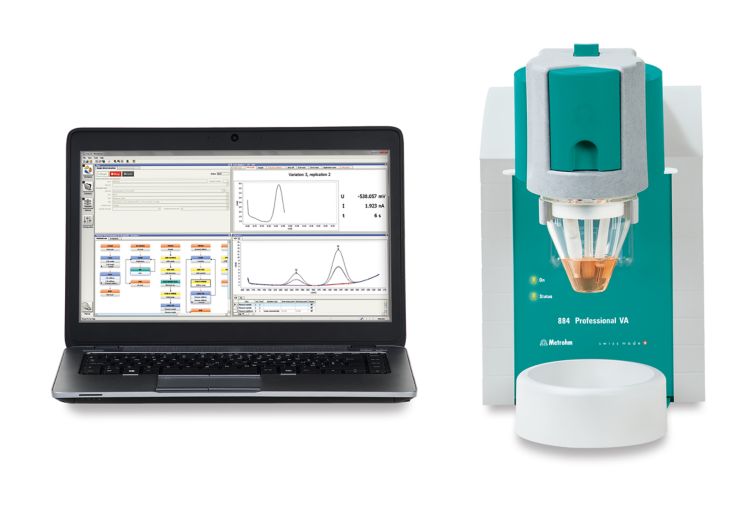The iron concentration in boiler feed water must be monitored to ensure reliable and safe operation of the water-steam circuit in thermal power plants. Iron ions, even in low concentrations, are an indicator for corrosion and therefore can signal potential safety issues. Various guidelines set limits for the maximum iron content in boiler feed water.
The concentration of total iron in boiler feed water can be determined with high sensitivity using adsorptive stripping voltammetry (AdSV) using 2,3-dihydroxynaphthalene (DHN) as complexing agent. Concentrations of total iron in water samples can be determined down to approximately 0.1 μg/L with this method.
The AdSV method is simple to perform, specific, and free of interferences. It is a viable, less sophisticated alternative to atomic absorption spectroscopy (AAS) or inductively coupled plasma (ICP) requiring only a moderate investment in hardware and low running costs.
Boiler feed water

The water sample, DHN solution, and the buffer solution are pipetted into the measuring vessel. The determination of total iron is carried out with an 884 Professional VA using the parameters specified in Table 1. The concentration is determined by two additions of an iron standard addition solution.
| Parameter | Setting |
|---|---|
| Working electrode | HMDE |
| Mode | DP – Differential Pulse |
| Deposition potential | -0.1 V |
| Deposition time | 30 s |
| Start potential | -0.2 V |
| End potential | -1.2 V |
| Peak potential Fe | -0.7 V |
- Working electrode: Multi-Mode Electrode pro with standard glass capillaries
- Reference electrode: Ag/AgCl/KCl (3 mol/L) reference electrode with electrolyte vessel. Bridge electrolyte: KCl (3 mol/L)
- Auxiliary electrode: Platinum rod electrode
The determination of total iron in boiler feed water samples can be carried out in a simple and straightforward manner with adsorptive stripping voltammetry (AdSV).
| Sample | Total Fe [μg/L] |
|---|---|
| Boiler feed water | 3.0 |
Internal reference: AW VA CH4-0513-072012
 Share via email
Share via email
 Download PDF
Download PDF